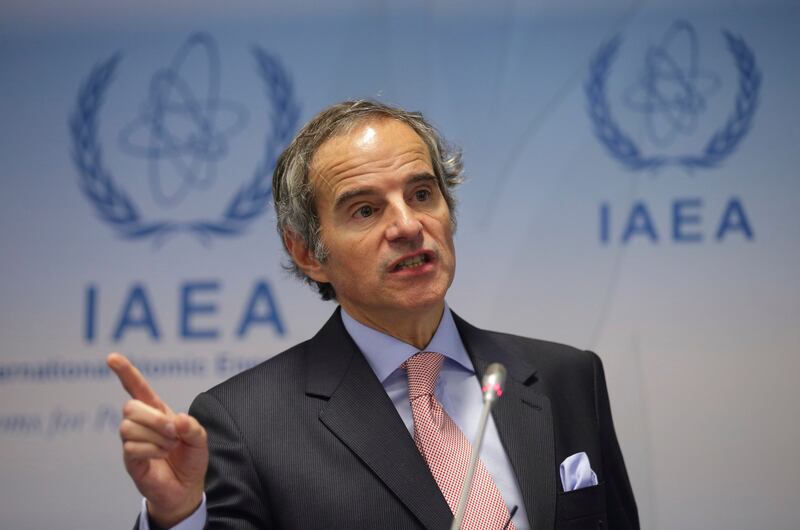Iran has resolved two outstanding inquiries from the International Atomic Energy Agency, a report seen on Wednesday by The Associated Press said.
The confidential quarterly report by the Vienna-based IAEA said inspectors no longer had questions on uranium particles found to be enriched to 83.7 per cent at its underground Fordo facility.
“The agency informed Iran that, following its evaluation of the data, the agency had assessed that the information provided was not inconsistent with Iran’s explanation … and that the agency had no further questions on this matter at this stage,” the report said.
The report added that investigators have also closed off their investigation of traces of man-made uranium found at Marivan, near the city of Abadeh, about 525 kilometres south-east of Tehran.
Analysts had repeatedly linked Marivan to Iran’s secret military nuclear programme and accused Iran of conducting high-explosives tests there in the early 2000s.
The report said that “another member state” operated a mine at the area in the 1960s and 1970s under the rule of then-Shah Mohammad Reza Pahlavi. It was not immediately clear which nation was involved in the mining.
Iran had argued the uranium traces could have come from “laboratory instruments and equipment” used by miners at the site. The IAEA called the answer “a possible explanation”.
“The agency at this time has no additional questions on the depleted uranium particles detected at Marivan … and the matter is no longer outstanding at this stage,” it said.
The agency also installed enrichment monitoring devices at Fordo and Natanz, Iran's other main enrichment site, the report said.
Iran on Tuesday had said international inspectors closed off the two lines of inquiry over its nuclear programme.
Separately, the IAEA acknowledged installing new cameras at a workshops in the Iranian city of Isfahan where centrifuge rotors and bellows are manufactured. Centrifuges rapidly spin uranium gas, enriching it.
However, Iran has been withholding surveillance footage from the IAEA amid its tension with the West.
The report comes as tension between Iran and the West has escalated over its nuclear programme. Tehran also has faced mass protests recently and anger from the West over its of arming Russia with bomb-carrying drones now being used in Ukraine.
Iran’s 2015 nuclear deal limited Tehran’s uranium stockpile to 300kg and enrichment to 3.67 per cent – enough to fuel a nuclear power plant.
The US unilateral withdrawal from the accord in 2018 set in motion a series of attacks and escalations by Tehran over its programme.
Iran has been producing uranium enriched to 60 per cent purity – a level for which non-proliferation experts already say Tehran has no civilian use.
The IAEA report also estimated that as of May 13, Iran’s total enriched uranium stockpile was at 4,744.5kg. Of that, 114.1kg is enriched up to 60 per cent purity, a short, technical step to weapons-grade levels.
The last IAEA estimate in February put Iran’s uranium stockpile at about 3,760kg. Of that, 87.5kg was enriched up to 60 per cent purity.
While the IAEA's director-general has warned that Iran now has enough uranium to produce “several” bombs, months more would likely be needed to build a weapon and potentially miniaturise it to put it on a missile.
The US intelligence community has maintained its assessment that Iran is not pursuing an atom bomb.






